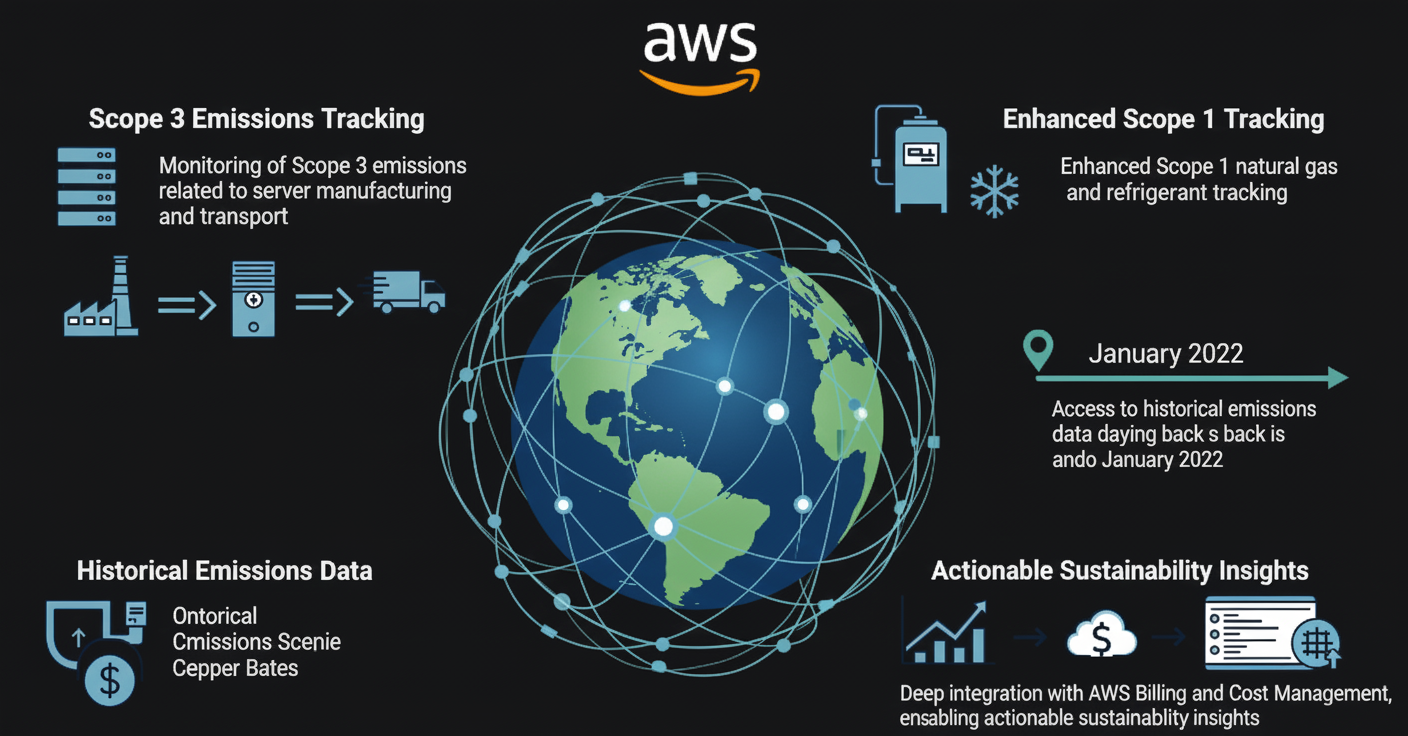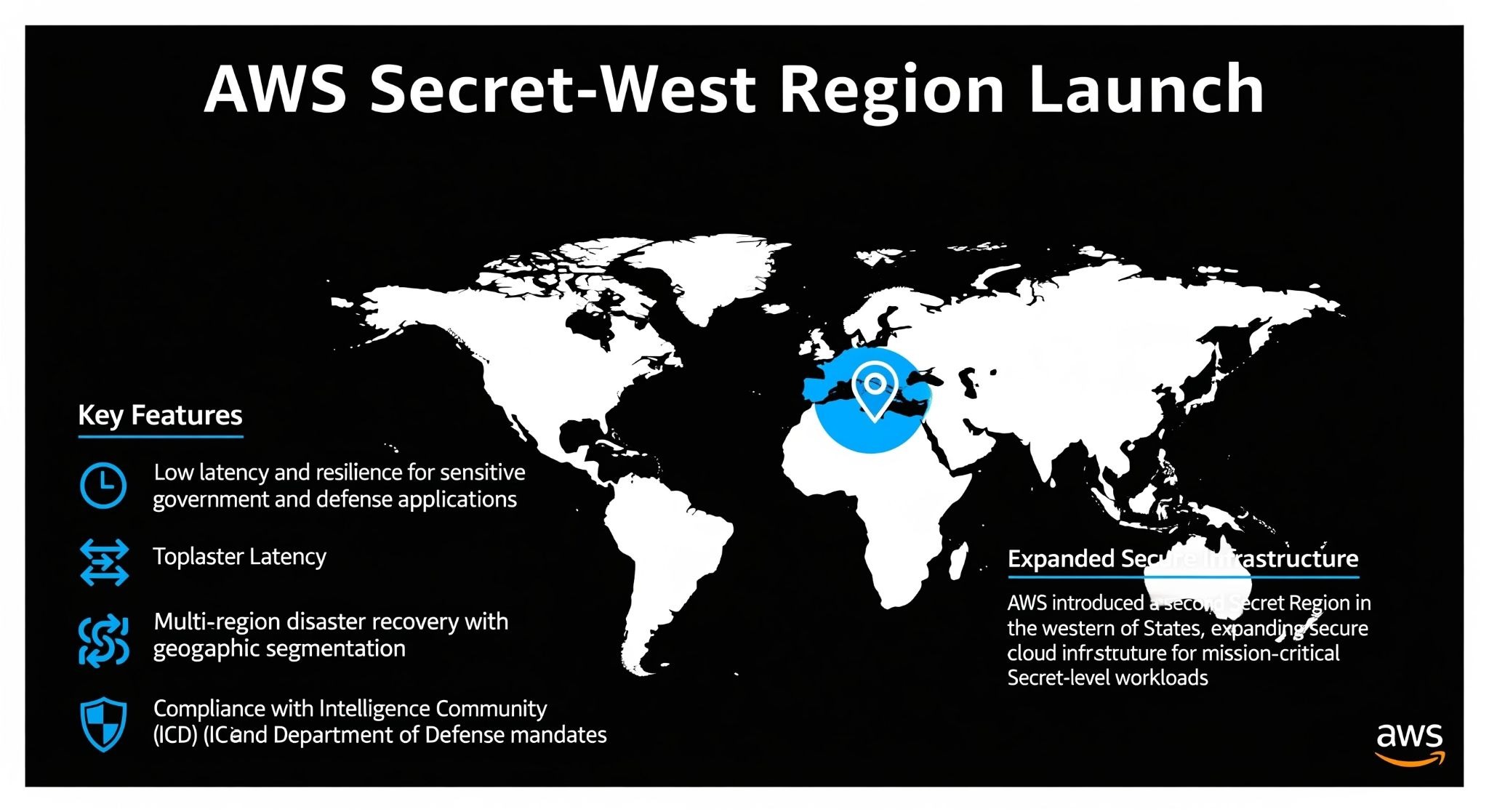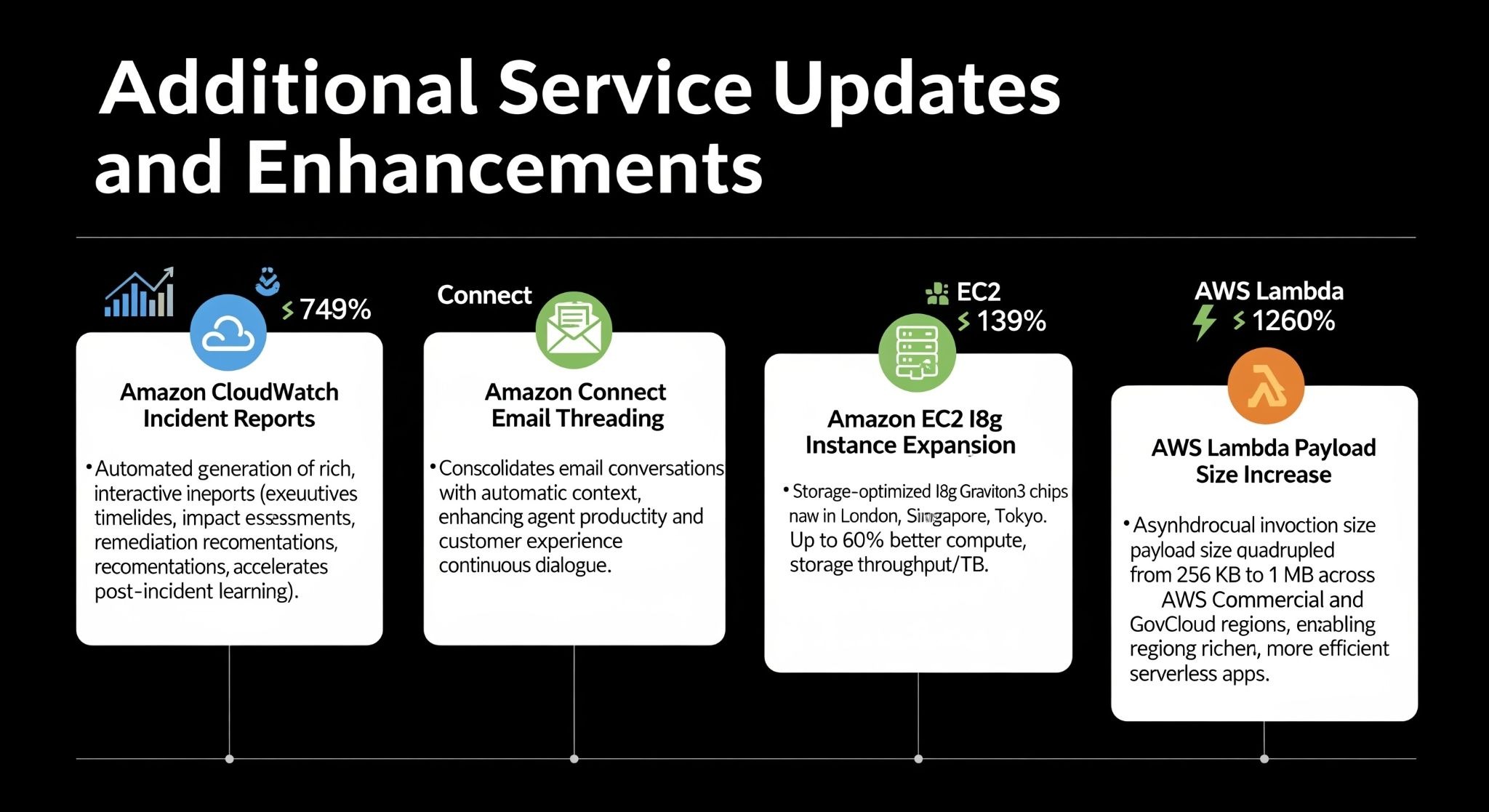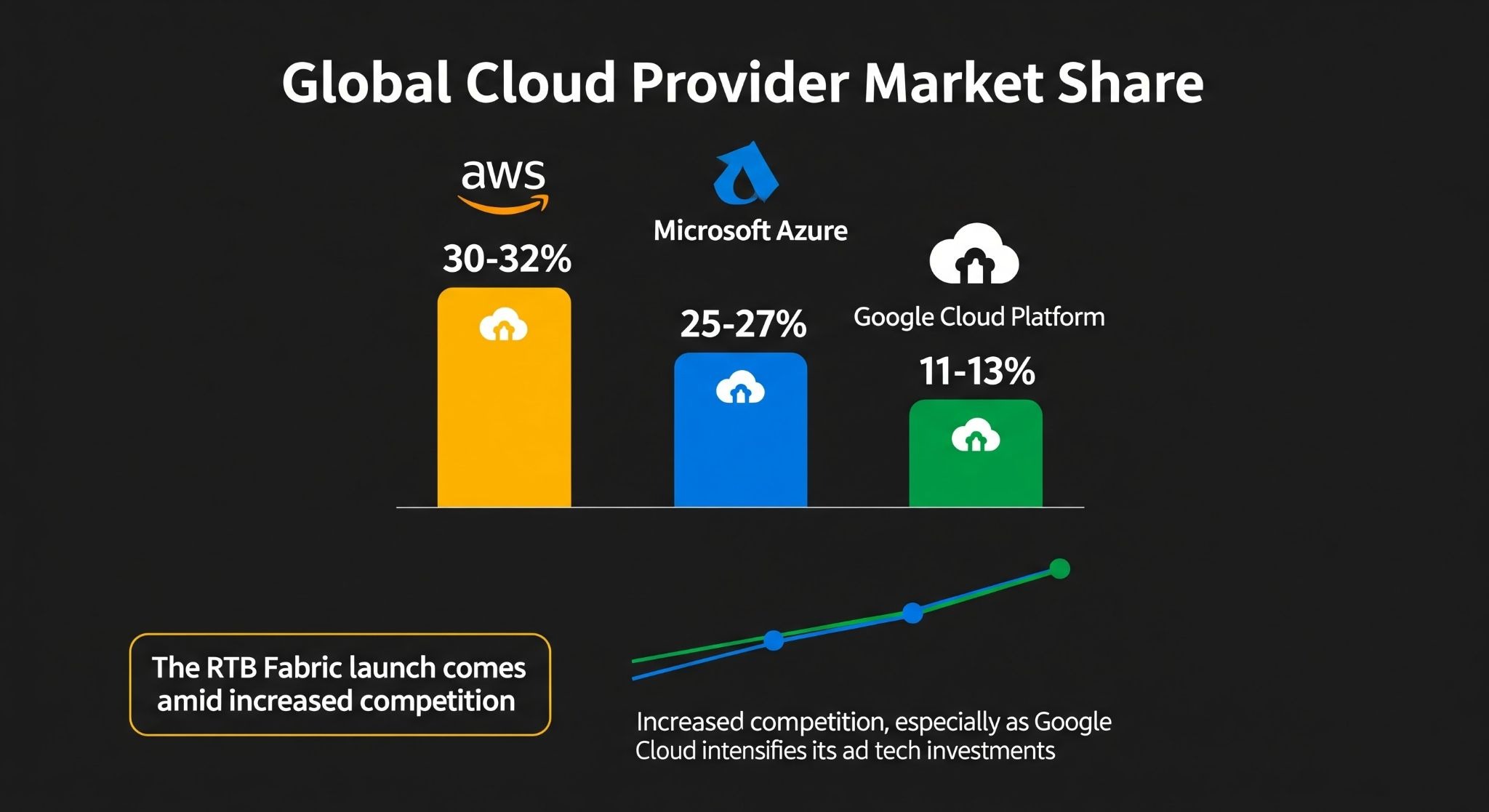
October 27, 2025, marked a defining day for AWS as the company unveiled several groundbreaking services and enhancements that reinforce its market leadership and operational excellence. While still navigating recovery from the recent US-East-1 DNS outage, AWS demonstrated strategic resilience through launches including AWS RTB Fabric for advertising technology, expanded sustainability tools with comprehensive Scope 3 emissions reporting, and the unveiling of a new Secret-West Region tailored for mission-critical government workloads.
Additionally, operational tools such as Amazon CloudWatch’s automated incident reporting and Amazon Connect’s threaded email views improve support efficiency, while expansion of EC2 I8g instances enhances cloud compute power globally. This roundup offers a comprehensive analysis of key announcements, detailing their customer impact and competitive significance for enterprises across industries.

The highlight of the day was the general availability of AWS RTB Fabric, a fully managed, low-latency platform designed specifically for real-time bidding (RTB) workloads in advertising technology. AWS RTB Fabric is aimed at countering Google Cloud Platform’s dominance in this lucrative space, offering customers:
This service provides a neutral, modular, and cost-effective alternative for AdTech companies seeking flexibility and scale without relying on competitor platforms.

AWS significantly enhanced its Customer Carbon Footprint Tool (CCFT) by incorporating Scope 3 emissions tracking, offering end-to-end visibility into carbon impact throughout the hardware lifecycle, data center power usage, and logistics. The update features:
This tool solidifies AWS’s sustainability leadership, enabling customers to meet evolving environmental compliance mandates and make informed, data-driven cloud decisions.

AWS introduced a second Secret Region in the western United States, expanding secure cloud infrastructure for mission-critical Secret-level workloads. This region offers:
This expansion reinforces AWS’s position as the de facto cloud provider for classified workloads.


Cloud Market Dynamics:
AWS holds a commanding ~30-32% global market share, ahead of Microsoft Azure (~25-27%) and Google Cloud Platform (~11-13%). The RTB Fabric launch comes amid increased competition, especially as Google Cloud intensifies its ad tech investments.
The Ad Tech Battle:
RTB Fabric represents AWS’s strategic countermove, providing a perceived neutral infrastructure for programmatic ad workloads, modular third-party integrations, lowered latency, and optimized costs. Analysts predict it will challenge GCP’s rapidly gained ad tech market share.
Recovery from Recent Outage:
The week began with a significant DNS outage in US East, impacting DynamoDB and other services, underscoring the critical importance of cloud reliability. AWS’s transparent handling and infrastructure lessons reinforce its long-term service quality commitments.
Ad Tech Companies
Enterprise Sustainability Teams
Government and Defense Organizations
AWS’s October 27 announcements showcase a multi-faceted approach to securing its cloud leadership by deepening vertical specialization with RTB Fabric, raising sustainability standards with transparent carbon tracking, extending mission-critical secure regions, and refining operational tools for improved customer experience.
October 27 was pivotal for AWS, underscoring the company’s capacity to innovate rapidly post-outage and deliver new avenues for customer value and operational excellence. From revolutionizing ad tech infrastructure with RTB Fabric, advancing sustainability transparency, to bolstering government data security, AWS continues to shape the future of cloud computing on multiple fronts.
Organizations alike, from digital advertisers to public sector agencies, now benefit from more powerful, transparent, and specialized cloud services that align with today’s complex industry demands. Traditional cloud commitments often lock you into long-term contracts that limit flexibility and increase financial risk. Usage.ai’s Flex Commitment Program offers a dynamic, risk-managed solution that maximizes savings while providing unmatched flexibility.
How It Works: Usage.ai analyzes your cloud usage, recommends optimal commitments, and automatically executes purchases—no code changes or downtime needed. All active commitments are visible in your dashboard for complete transparency.

Why Choose Flex Commitments?
Enjoy the cost benefits of long-term commitments paired with the security to adapt as your usage evolves, saving up to 57% on cloud spend—effortlessly.
Get Started:
Log in to Usage.ai, connect your AWS environment, and receive a free, automated analysis of your discount coverage and regional workload cost optimization strategies. This onboarding process typically takes between 5 and 10 minutes.
Ready to maximize profitability by automating your cloud commitment spend?
Share this post
.jpg)
Google Cloud Platform (GCP) entered the last week of October 2025 amid vibrant innovation and ongoing efforts to enhance its reliability following significant service impacts earlier in the year. For enterprise decision-makers, understanding these developments is crucial both to leverage GCP’s advancing capabilities and to manage risks around cloud service disruptions effectively. This blog consolidates key updates from October 22 to October 29, 2025, spanning product upgrades, new features, and an overview of notable service health events.

October 27, 2025, marked a defining day for AWS as the company unveiled several groundbreaking services and enhancements that reinforce its market leadership and operational excellence. While still navigating recovery from the recent US-East-1 DNS outage, AWS demonstrated strategic resilience through launches including AWS RTB Fabric for advertising technology, expanded sustainability tools with comprehensive Scope 3 emissions reporting, and the unveiling of a new Secret-West Region tailored for mission-critical government workloads. Additionally, operational tools such as Amazon CloudWatch’s automated incident reporting and Amazon Connect’s threaded email views improve support efficiency, while expansion of EC2 I8g instances enhances cloud compute power globally. This roundup offers a comprehensive analysis of key announcements, detailing their customer impact and competitive significance for enterprises across industries.

The past week on Microsoft Azure (October 15–22, 2025) showcased the platform’s ongoing evolution from reactive resilience to proactive scalability. After a turbulent start to October with the Azure Front Door outage (Oct 9), the ecosystem shifted focus toward recovery hardening, partner API modernization, and performance scaling across databases and AI services. Enterprises saw value from updates that redefined cloud reliability and flexibility: smarter database scaling, zero-downtime migration, Bring Your Own Model (BYOM) capabilities for Azure AI, and sustained focus on self-healing load architectures.
